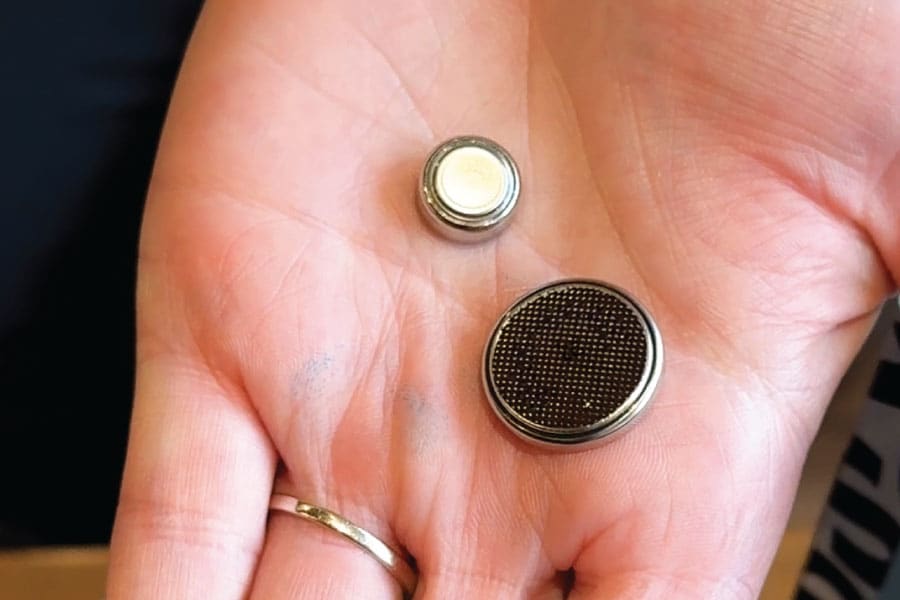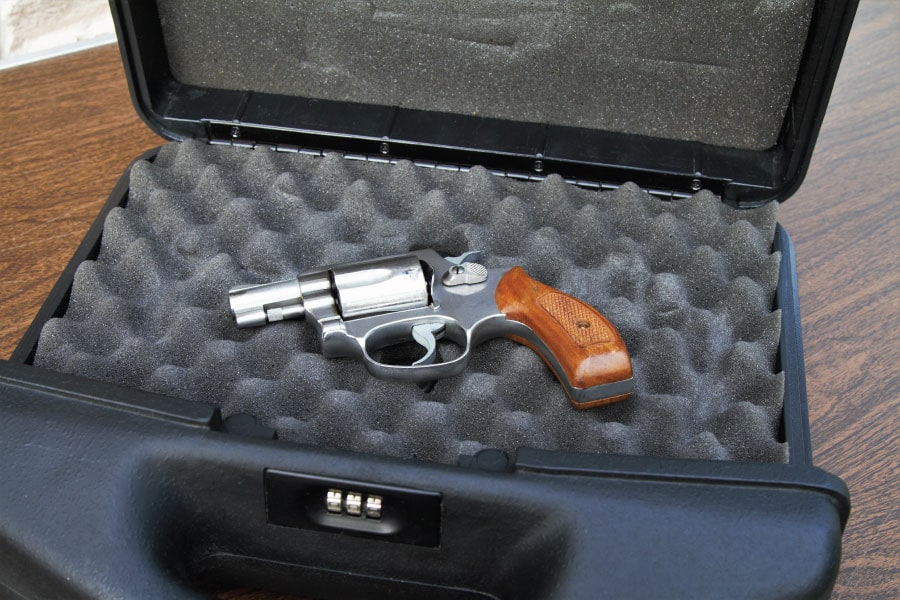Why Are Button Batteries So Dangerous?

Button batteries are flat, round, silver batteries found in everything from key fobs to remote-controlled devices and toys. If a child swallows one, it can cause severe damage to the esophagus within 2 hours of ingestion, or even death. According to SafeKids Worldwide, the number of button battery injuries in the U.S. has dramatically increased in the last decade, with more than 2,800 kids treated in emergency rooms each year. That’s 1 child every 3 hours.
One of our Children’s Healthcare of Atlanta pediatric surgeons sheds light on button battery injuries, including how to prevent them, what to do if your child swallows one and how to stay out of the ICU.
In this article:

A surgeon’s warning on the dangers of button batteries
By: Matthew Santore, MD, Pediatric and Thoracic Surgery
Button batteries may seem harmless, but they can cause life-threatening injuries in infants and young children. As a pediatric surgeon, I’ve seen the devastating impact of these injuries firsthand. The good news is they can be prevented, and my goal is to make sure you and your child never experience the long-term trauma they can cause.
What happens after a child has swallowed a button battery?
Swallowing a button battery is dangerous for anyone—especially babies and young children. Because their bodies are very small, the battery becomes lodged in their throat. Almost immediately, the battery begins to burn their esophagus. Severe damage can occur within just 2 hours, but these injuries progress over time. So, even after the battery is removed, the injury will get worse instead of better. In the best-case scenario, this child would require a hospital stay for monitoring and may have to use a feeding tube. More severe cases can result in a lengthy ICU stay, multiple surgeries and even death.
Why are button battery injuries on the rise?
First, button batteries are becoming more common. They power many everyday items, such as key fobs and remote controls. They’re also hiding in places you may not expect to find them, like musical greeting cards, very small toys and electronic board books.
Second, as technology changes, button batteries are becoming bigger and more powerful. The increased size means a battery is more likely to get lodged in your child’s esophagus. And, unfortunately, this new, higher voltage causes even more severe injuries.
So, what can you do? The most important thing is to raise awareness about the dangers these batteries present. From parents to grandparents to nannies to babysitters, anyone who is taking care of a child should take that seriously.

How can you prevent button battery injuries?
The first step in preventing button battery injuries is understanding the risk factors.
- Children are most vulnerable between the ages of 6 months and 5 years.
- Toddlers are at greatest risk because they are very mobile, are curious and tend to put everything in their mouths. At this age, their esophagus is also very small, so a button battery is most likely to get stuck and cause severe injury or death.
If you care for young children, follow these lifesaving tips:
- Monitor children around everyday items that contain button batteries. Common household items that are powered by button batteries include key fobs, remote controls, flameless candles, garage door openers, hearing aids and watches.
- Monitor what children are playing with. You may be surprised to learn that some kids’ items contain button batteries, too. These include singing greeting cards, musical board books, light-up jewelry and electric toothbrushes. To avoid button battery ingestion, always monitor young children when they’re using these items.
- Treat button batteries like you would other deadly safety hazards, such as medications, firearms or hazardous materials like cleaning products. Secure all batteries in a locked safe, drawer or cabinet, up and out of reach of young children. Wrap used batteries securely and safely discard them where your child can’t get to them.
- Check items regularly for damage or loose battery compartments. Lots of age- and developmentally appropriate toys have electronic buttons, lights, sounds and music. In most cases, they also have button batteries in them. Check these items regularly to be sure the battery compartment is secure. Over time, wear and tear can cause them to come loose, and the batteries to fall out much easier. Also avoid any toys that use tab locks on their battery compartments, which can easily be opened by little fingers.
- Insert or replace batteries out of sight of young children. Often, when we’re swapping out batteries, we take out the entire package from our drawer or cabinet. Curious little hands may find the extra batteries and put one in their mouth. Be extra mindful of where and how you’re using batteries so that children don’t accidentally gain access to them.
- Keep an eye out for spare batteries when opening packages. Be careful when opening toys or other items kids are excited to get their hands on. Many come with spare batteries that can drop to the floor or become forgotten on the coffee table. Move these up and out of reach of children immediately.
What should you do if your child swallowed a button battery?
Even if you only suspect your child swallowed a button battery, treat it as an emergency and act immediately. Following these steps will help save your child’s life:
- If your child is actively choking, call 911. Immediate steps need to be taken to open your child’s airway. 911 dispatchers will make sure help is on the way and talk you through lifesaving measures.
- Get your child to the hospital as soon as possible. Severe damage from a button battery occurs within as little as 2 hours. So do not hesitate. Do not stop or wait and hope it’s going to get better. Go straight to the nearest emergency room (ER). If there isn’t a battery, you’ve avoided an emergency, but the risk of sitting on it is way too severe and way too dangerous.
- Call poison control on the way to the hospital. You can reach poison control’s battery ingestion hotline at 800-498-8666. Their experts are standing by to provide further guidance while you make your way to the ER.
- Give your child honey at regular intervals until you get to the ER. If your child is over the age of 1, administer 2 teaspoons of honey every 10 minutes, including while you’re on the way to the ER. The honey can help minimize damage by coating the esophagus and neutralizing the battery corrosion. Keep in mind, honey is not safe for babies younger than 1 year old. For infants under 1, skip this step and get to the ER as fast as possible.
- Avoid giving your child food or drinks. Other than honey, don't allow your child to eat or drink anything until your doctor confirms it’s safe to do so. Liquids and food may make the injury worse and can also lead to choking if a battery is lodged in their throat.
To learn more about battery and toy safety, check out our toy safety guide.
If your child has a life-threatening injury or illness, is having trouble breathing or is unconscious, call 911 and/or visit an emergency room immediately.


